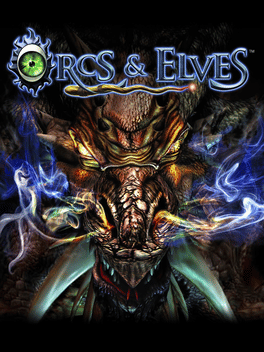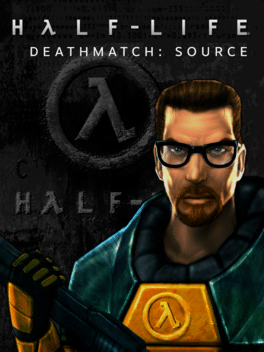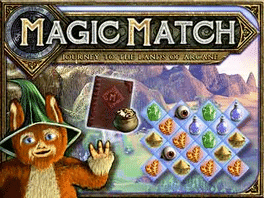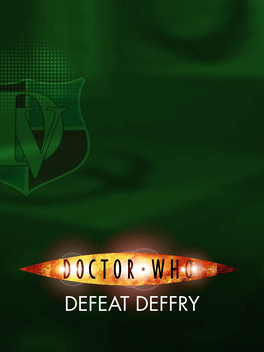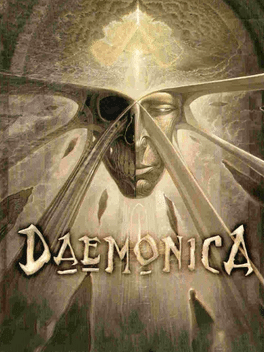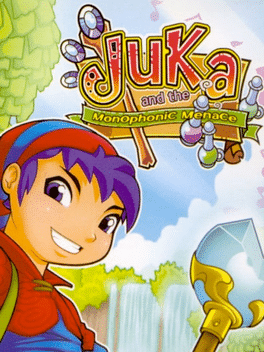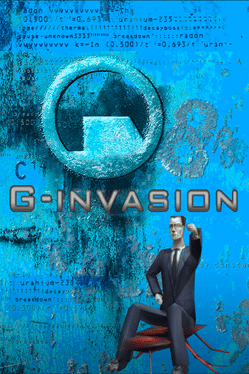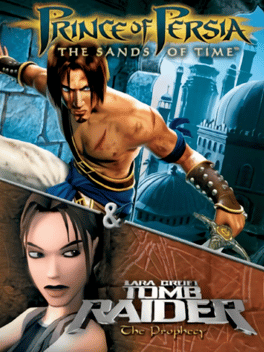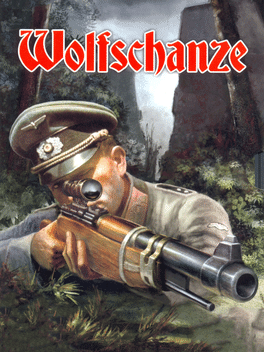New Games - Page 10278
-
Orcs & Elves
2006
Orcs & Elves
2006
star 7.1Orcs & Elves' is a turn-based role-playing game, played from a first person perspective. Each individual action by the player counts as a "turn", whether that be movement, using an item or weapon or casting a spell in which other foes will also move and attack in turns following each. Each forward move by the player is done on an invisible grid that makes up each level in order to retain the turn-based element while appearing more like a first person adventure due to its fast paced nature. -
Half-Life Deathmatch: Source
2006
star 6.8Half-Life Deathmatch: Source is a recreation of the first multiplayer game set in the Half-Life universe. Features all the classic weapons and most-played maps, now running on the Source engine. -
When in Rome 1: Accounting for Taste
2006
Manhattan, May, 1954. The last few years, you've settled into a routine. You work at the bank, you go home, you occasionally have dinner with your mother. It is all acceptably ordinary. One day a strange creature crosses your path, and disrupts the schedule entirely. A work of interactive fiction by Emily Short. -
Glass
2006
Glass
2006
The Prince sits awkwardly on the couch, holding his glass slipper and trying to keep it from crushing. Lucinda and Theodora have the ends of the same couch, and they are taking turns seeing who can bend lowest and show off the most cleavage; while the old lady, in her wing chair, carries on about nonsense... Glass is a conversation-oriented fairy tale, taking place in one room. -
Magic Match: Journey to the Lands of Arcane
2006
Magic Match: Journey to the Lands of Arcane is a match 3 style puzzle game from Codeminion. -
Tsunoda Thunder
2006
-
TO: Crossfire
2006
TO: Crossfire
2006
Led by the people behind TacticalOps, backed up by a bunch of artists, modellers, mappers and supporters, the team behind TO: Crossfire pushes the limitations of Epic's Unreal Engine 2. Facing the choice of bringing terror to the world or fighting it, you will be part of decisive battles at locations you will not forget. Rescue hostages, blow up a building, gain information, assassinate a target - there is a vast variety of possibilities to decide a battle! And thus the assault continues... -
Doctor Who: Defeat Deffry
2006
A Flash web game inspired by Doctor Who episode "School Reunion". Mr. Finch, the headmaster of Deffry Vale High School, asks you to break the alien Krillitane code after some logic and sequence tests. -
Daemonica
2006
Daemonica
2006
Daemonica is a 3D action-adventure game with RPG elements that was developed by Czech companies RA Images and Cinemax. The game is divided into 5 acts. Cinemax and RA Images planned a sequel to the game but it was cancelled. -
Untold Legends: The Warrior's Code
2006
star 6Untold Legends: The Warrior's Code is a sequel to the handheld video game Untold Legends: Brotherhood of the Blade. It was released on March 2006. While very similar to the original in gameplay, Warrior's Code introduced five new character classes, improved controls, a wider array of multiplayer modes, more character customizations, and shorter load times. -
Juka and the Monophonic Menace
2006
star 7.7Taking place in the world of Obla, Juka and the Monophonic Menace follows the journey of young alchemist Juka as he sets out to save his village from the evil Monophonic Menace. Gamers will help guide Juka and his assistant Bufo through six different environments while searching for items, solving puzzles, and defeating the Monophonic Menace's minions. Juka can shimmy, swim, jump, and climb through the highly detailed environments. Plus, players can enhance and upgrade Juka's many abilities by completing quests and collecting the various items. Another feature of the game is the alchemy ability. By collecting the six different elemental ingredients, players can mix and create their own items and potions for use during the game. This is the only way to get many of the more powerful potions. Combat is also unique in JUKA. Instead of battling or using magic, players have to quickly match a series of patterns. The quicker and more accurately the patterns are matched, the more damage an enemy takes. Juka and the Monopho -
G-man Invasion
2006
G-man Invasion
2006
The G-Men are everywhere! They're invading out dear planet are trying to kill you, kill me, kill everyone! It's your job to stop them! -
Guild Wars: Factions - Collector's Edition
2006
Guild Wars Factions is the second stand-alone campaign of Guild Wars. It is set in the Eastern-styled (Asian) continent of Cantha. The Guild Wars Factions Collector's Edition box includes: - Special In-Game Dance Emote for the Assassin and Ritualist - Double-sided poster: Map of Cantha and Assassin and Ritualist Poster - Artbook: "The Art of Guild Wars: Factions" - Bonus Music Key - Guild Wars Factions Soundtrack CD - Guild Wars Factions Mouse Pad - 2006-2007 Desk Calendar - 18x25cm Ritualist Cloth Picture - Assassin Sticker Pack - In-Game Miniature Kuunavang -
Chrononauts
2006
Chrononauts
2006
What would YOU do with a Time Machine? Would you stop the sinking of the Titanic? Prevent the assassination of JFK? Kill Hitler before WWII? These are just a few of the possibilities in Chrononauts, the award-winning card game of time travel. To win, you must change history at key points called Linchpins, so that history transforms into the Alternate Reality your character calls home. You can also win by collecting a specific set of Artifacts, such as a live dinosaur, the Mona Lisa, and an unpublished Shakespearean play. But be careful - if you create too many paradoxes, you could destroy the entire universe! -
Prince of Persia: The Sands of Time & Lara Croft Tomb Raider: The Prophecy
2006
A bundle that contains the GBA games Prince of Persia: The Sands of Time and Lara Croft Tomb Raider: The Prophecy -
Wolfschanze
2006
-
Dance Dance Revolution Supernova
2006
star 7The hottest revolution and bestselling video game in the music game category returns to its arcade roots with Dance Dance Revolution Supernova, the first arcade version to be released in North America in 6 years. Dance Dance Revolution Supernova uses a completely new hardware engine and is the largest game in the series. Players will have access to over 300 songs from different musical genres and 2000+ dance step patterns. Dance Dance Revolution Supernova is a brand new evolution in the DDR series and expands on every aspect of what made the original series innovative, fun and addictive. -
Guild Wars: Factions
2006
Guild Wars: Factions
2006
star 7.9Players from around the world to battle for the future of Cantha—a complex empire dominated by bureaucracy and strife, living under the shadow of an ancient evil. You must find a way to defeat Shiro and his afflicted minions as you navigate a hostile political climate. Guild Wars Factions is the second stand-alone release from developer ArenaNet, and features a new world, new mechanics, and new professions.

